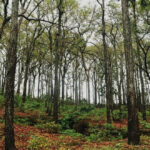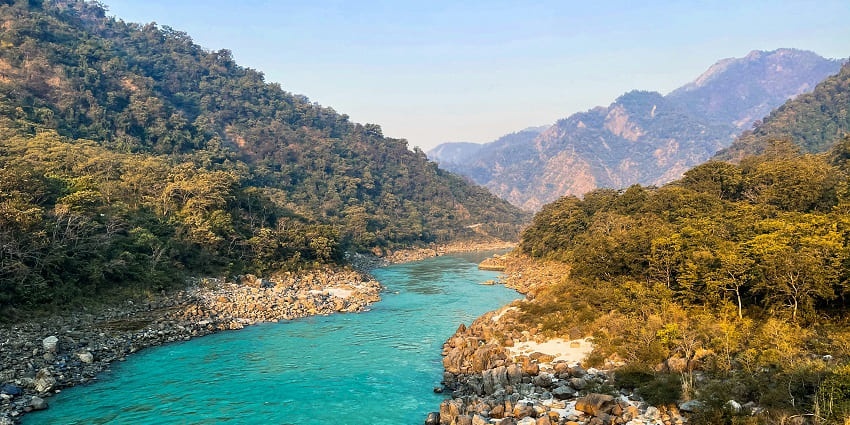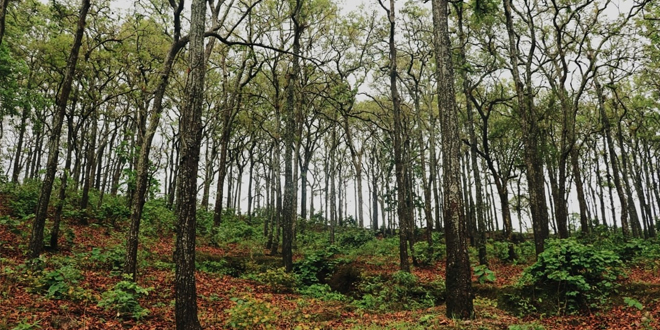In an extraordinary tale of community spirit and environmental resurrection, the once-barren and skeletal river, the ‘Mohan’, which flows through the village of Pipalgaon, is now teeming with water, fish, and the joyous shouts of children. This miraculous recovery is not an act of divine intervention, but the direct result of ten years of relentless, back-breaking work by the 500 families of Pipalgaon, who refused to let their lifeline die.
A decade ago, the Mohan River was a tragic sight—a wide, cracked channel of dust, littered with plastic and despair. Years of deforestation, soil erosion, and unchecked water extraction for water-intensive crops had sucked the river dry. The water table had plummeted, wells yielded only muddy sludge, and farmers faced consecutive crop failures. The village was on the brink of being declared a drought-prone zone, with many young people forced to migrate to cities for work.
“The river was our mother. We had watched her die, and with her, our hopes,” recalls 75-year-old Sarpanch, Dattu Patil. “One day, we held a village meeting under the ancient banyan tree. We decided that instead of begging the government for help, we would become the river’s doctors. We would heal her ourselves.”
The “Shramdaan” That Changed Destiny
The village launched a movement they called “Jal Jeevan Hariyali”—a three-pronged attack focused on water, life, and greenery. Their weapon of choice was Shramdaan—the voluntary donation of labour.
Every Sunday, for ten years, without fail, the entire village—men, women, teenagers, and even elderly who could no longer do heavy lifting—would gather at the riverbank at 5 AM.
- Water Shedding Management: They identified the river’s catchment area in the nearby hills and stopped all grazing and tree-felling. They built over 1,500 continuous contour trenches (CCTs) and loose boulder structures across the hillside. These structures slowed down the rainwater during the monsoons, allowing it to percolate into the ground instead of washing away the topsoil.
- Afforestation: The village nursery, run by the women’s Self-Help Group, grew over 85,000 saplings of native, drought-resistant species like Banyan, Peepal, Neem, and Amla. These were planted across the catchment area and the riverbanks. The roots of these trees now act as a natural sponge, holding the soil and water.
- Reviving the Riverbed: Within the river’s path, they constructed hundreds of small, check dams made of stone and cement. These nala bunds trapped whatever rainwater flowed, recharging the groundwater and creating small, persistent pools of water even in the dry season.
“The first two years, we saw no result. It was disheartening,” admits Sunita More, the head of the women’s group. “We would look at our blistered hands and wonder if it was worth it. But our elders kept our faith alive. They said, ‘The Earth is honest. She will repay every drop of your sweat.'”
The Miracle Unfolds
In the third year, a small miracle occurred. After the monsoon, the water in the check dams did not evaporate completely. For the first time in a generation, the riverbed held water until December. This was the sign they needed. Their enthusiasm redoubled.
Year by year, the water table rose. The village wells, which once ran dry by February, began to have water year-round. By the eighth year, a small, steady trickle began to flow along the riverbed even in the peak of summer. Today, the Mohan River has a knee-deep flow of clean water throughout the year.
The ecological and economic transformation has been profound. Farmers have returned to organic farming, growing a diverse range of millets, pulses, and vegetables. The revived forest now hosts a variety of birds and wildlife. The air is cooler, and the village, once a picture of desolation, is now an oasis of green.
The most poignant moment came last week when the village celebrated the “Mohan Utsav.” Children who were toddlers when the work began were now swimming in the same river their parents had saved.
“Our parents gave us this gift,” said 16-year-old Rohan, gesturing to the flowing water. “Now it’s our duty to protect it. We have formed a ‘Tarun Jal Rakshak’ group to ensure the river never dies again.”
The story of Pipalgaon is now being studied by NGOs and government agencies as a perfect model of community-led water conservation. But for the people of Pipalgaon, the greatest reward is not the national recognition they are receiving, but the sound of water flowing, the sight of green fields, and the knowledge that their home has a future.
As Sarpanch Dattu Patil puts it, his voice thick with emotion, “We did not just save a river. We saved our community, our culture, and our souls. We proved that when a village comes together with a pure heart, even a dying river can sing again.”









